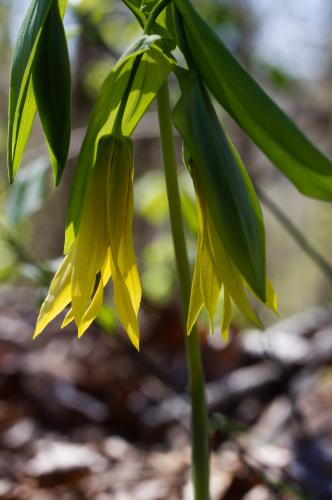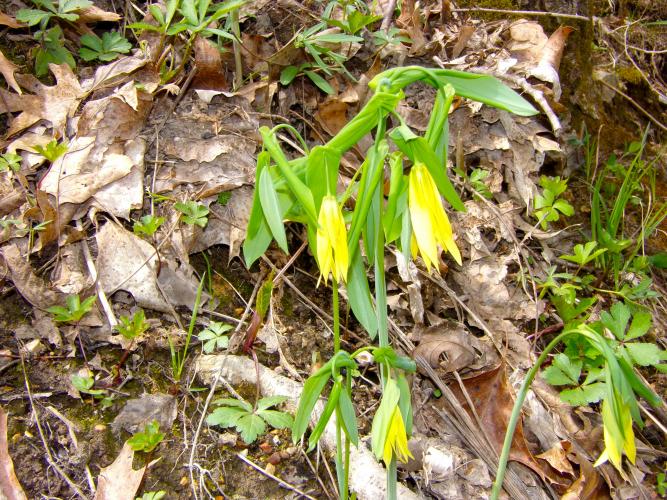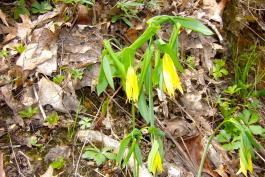
Stems smooth, usually forked, with zigzag pattern between leaf nodes. Flowers nodding, yellow, with 3 matching sepals and 3 petals about 2 long, petals and sepals narrow, often spirally twisted, terminal. Leaves perfoliate (completely surrounding the stem), broadly oval, hairy underneath, bright green. Fruit a capsule.
Similar species: Another species, small bellwort (U. sessilifolia), is scattered mostly north of the Missouri River, has hairless leaves that are sessile (not perfoliate), has smaller, paler flowers, and generally only lives in low areas.
Height: to 2 feet.

Statewide, except some southwestern counties.
Habitat and Conservation
Occurs in moist bottomland and upland forests, in ravines and valleys, and on rich, wooded slopes; less commonly on shaded bluff ledges or stream banks.
Human Connections
Young shoots of some species of bellworts have been cooked and eaten like asparagus. The starchy rootstocks have also been cooked and eaten. But most people only "devour" these pretty spring wildflowers with their eyes!
Ecosystem Connections
Bellworts are in the lily family, along with daylilies, trilliums, onions, tulips, and many more. Lilies have many traits in common, but almost all have flower parts in threes, leaves with parallel veins, and bulbs, tubers, or similar as rootstocks.



























